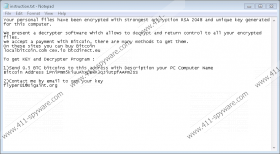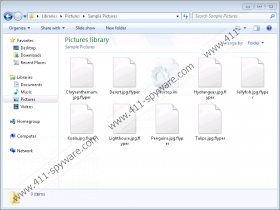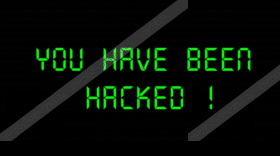Flyper Ransomware Removal Guide
Flyper Ransomware is a piece of malware that targets personal files found on the infected computer. According to our researchers, this infection specifically targets photos and documents, which, of course, are the most sensitive of all files. If you have not stored these files on an external drive or backed them up using another method, the ransomware is exceptionally destructive. Although it does not remove the files, it encrypts them using a complex algorithm to render them unreadable. Sure, a decryption key is created along with the encryption key, and, technically, it is possible to decrypt the files. The thing is that cyber criminals are the ones in control of this key, and it is in their disposition whether or not to reveal it. Obviously, they use this opportunity to demand ransoms from their victims, and this is what has driven the development of Gerkaman@aol.com Ransomware, Nullbyte Ransomware, and all other infamous infections. Whether you want to learn how to delete Flyper Ransomware or get information about this threat, you should continue reading.
According to our research, Flyper Ransomware developers use corrupted spam emails to spread this infection. The threat’s executable might be represented as a JPG file or a document (e.g. .pdf file) that appears to represent interesting or important content. You might find that the file is empty, but, in reality, a malicious ransomware is unleashed to encrypt your personal files. Once it is done, you will find that the corrupted files have the “.flyper” extension, but that is not the only thing that identifies this infection. The ransomware will also change the Desktop image to inform you that you were hacked, and the “instruction.txt” file will be added to provide you with more information. This TXT file states that a decryption key and the so-called decryption program will be released only after you pay a ransom. The sample we have tested asked for 0.5 Bitcoins, but you might face a different sum. If we are being honest, 0.5 BTC is quite low compared to most ransomware infections. Nevertheless, it converts to over $300, and not all users have that kind of money to spare, especially when there is no guarantee that it would account for anything.
What would happen if you were not provided with a decryptor after paying the ransom and contacting the creator of Flyper Ransomware at flyper01@sigaint.com? Well, because cyber criminals are not accountable for anything, it is safe to say that nothing would happen. Cyber criminals are anonymous, and the way they are collecting ransom payments – using a Bitcoin Address – makes it difficult to track them as well. If law enforcers could catch cyber criminals, they would, but full anonymity prevents that. Because cyber crooks cannot be held responsible for anything they do, they can do whatever they want. Due to this, we fear that they might take your money without providing you with a decryptor. Unfortunately, there are a lot of ransomware infections whose victims report losing their money for nothing, and this is what you need to consider when you are thinking about paying the ransom requested by Flyper Ransomware. Are the files encrypted worth the risk of potentially losing your money? Hopefully, your personal files are securely backed up, and you do not even need to think about taking this kind of a risk.
We strongly recommend removing Flyper Ransomware as soon as possible. Surely, the process will be arrested until you decide how to go about the encrypted files, but you must not forget to eliminate this ransomware. Even if you pay the ransom and your files are freed, you must delete this infection before it repeats its attack again. Although many users choose to erase the infection manually, we suggest using automated malware detection and removal software. First of all, other infections might be active, and a trusted remover will eliminate all of them at the same time. Second, your operating system is not protected reliably, and you need to strengthen its protection ASAP, which is something that can be done by reliable anti-malware software. If you have any questions about the Flyper Ransomware elimination procedures, please leave a comment below.
How to delete Flyper Ransomware
- Right-click the malicious .exe file.
- Select Delete.
- Replace the Desktop wallpaper.
- Delete the instruction.txt file.
- Scan your PC to check for leftovers.
Flyper Ransomware Screenshots:




